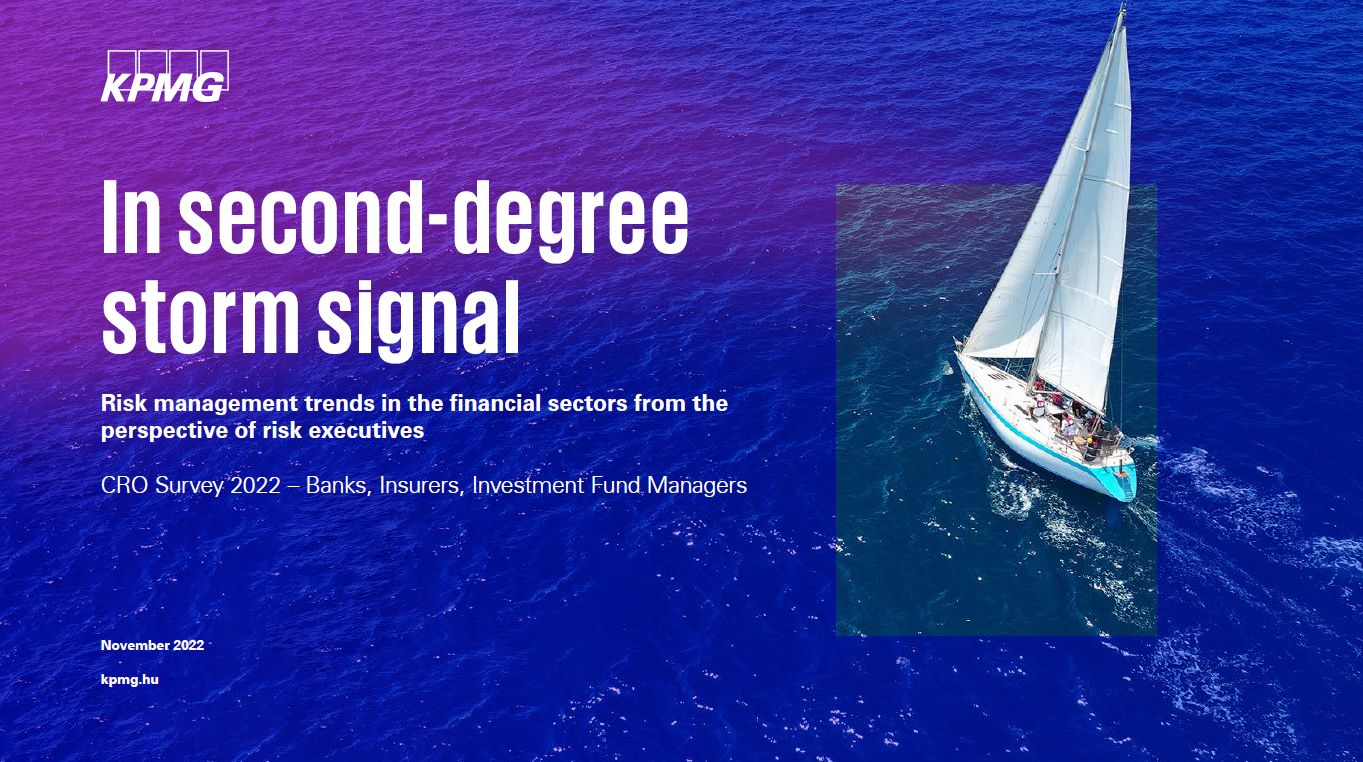Risk management trends in the financial sectors from the perspective of risk executives
Stormy gusts, high and prolonged waves, poor visibility. In sailing terms, elements of a second-degree storm signal can be used to describe the economic environment in which risk executives have to make responsible managerial and professional decisions every day. Uncertainty has reached proportions not seen in a long time. Most professionals do not yet have experience in managing interest rate environments and inflation levels such as those we find ourselves in. And considering current geopolitical tensions, even the efficacy of the traditional economic toolkit is being questioned.
In these circumstances, we once again conducted our usual three-yearly risk management survey with 32 executives of the domestic financial sector. Back in 2019, the chief risk officers (CROs) of banks, insurance companies and fund managers were already worried about how long the expanding economic cycle could be sustained. In retrospect, we can see we have gone from crisis to crisis.
of the majority believe that traditional credit and market risks will continue to increase
of CROs entrepreneurial spirit waned with regard to innovative technologies
expects an increase in development resources among insurers' CROs
Key findings
The authority of risk executives (CROs) has continued to increase. Ninety-two percent of them are members of the board of directors or report directly to the CEO, and in the case of banks and fund managers, the figure is 100%.
The role is becoming more focused. CRO influence grows, but to a varying extent at different financial institutions. It is increasingly typical among banks that risk assumption and risk control fall into the same hands.
Nearly 70% of fund managers’ risk executives now experience greater influence in strategy development and access to information.
Strengthening risk awareness and risk culture is the biggest added value, according to bank CROs: 90% of them thought this was important, which is a significant increase compared to the values of 2016 and 2019.
For fund managers operating in smaller organizations, the focus is on the accurate measurement, reduction and hedging of risks, and on the proportional pricing of risks.
Similar to the 2019 and 2016 results, CROs continue to see involvement in strategic decision-making as the most important measure of their success.
Although data quality is improving, the profession is still hindered by deficiencies in IT systems. Resource problems have also come to the fore.
Optimism regarding the growth of development resources has dropped significantly. Only 16% of insurers‘ CROs expect growth.
Scarcity of resources requires prioritization. Accordingly, compared to 2019, CROs are more divided regarding the allocation of resources between areas.
Skills and expertise, risk systems, and data quality are all preeminent as goals. While the training of employees was not yet a priority among fund managers in 2019, almost 70% of them now place more emphasis on it, while insurers want to improve internal communication to a far greater measure than respondents from other sectors.
At large institutions, the development of risk culture is extremely important, with 72% of the respondents desiring to strengthen this.
Further regulatory tightening is perceptible, while the newly emerged ESG requirements represent the biggest challenge.
According to the previous survey, the relative importance of traditional risk types decreased; however, over the past two years, CROs have again experienced an increase in market and credit risks, which may further increase in the years ahead. In the long term, ESG and cyber risks will be in focus.
Conservative product strategies are supported. Ninety-five percent of banks now support green loans, while at insurance companies traditional risk life insurance and health insurance are the most supported products. Support for home insurance has decreased, with 70% of CROs rejecting exotic investment funds.
Eighty-five percent of the respondents see declining economic activity and soaring prices / interest rates as significant sources of risk. Concerns are heightened by the weakening and volatility of the forint, and by geopolitical tensions.
As risks and uncertainty increase, the desire to innovate decreases. Compared to 60% 3 years ago, only 30% of respondents regard artificial intelligence as a top priority in risk areas. Support for collaboration with tech companies is also decreasing.
ESG, in addition to being an engine of innovation, could also become a field for professional cooperation between sectors.
We cannot, of course, know what the future will bring. Waves in choppy waters make navigation difficult, but companies in the financial sectors navigate rough waters with focused and strengthened risk management functions. For CROs, involvement in strategic decisions remains the most important measure of success, and it is encouraging that they are on the right track in this regard. With this publication, we also want to help them to stay afloat and make good decisions.


